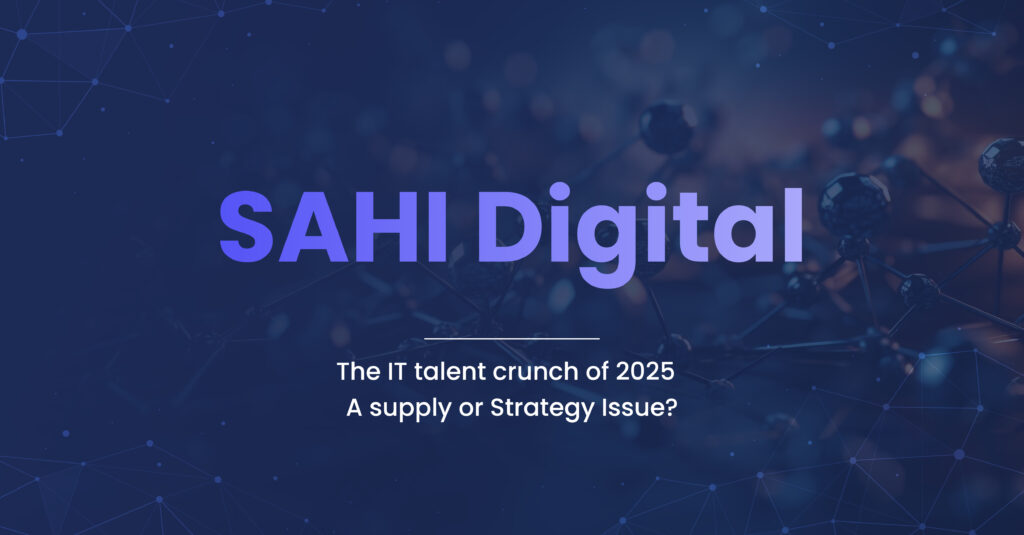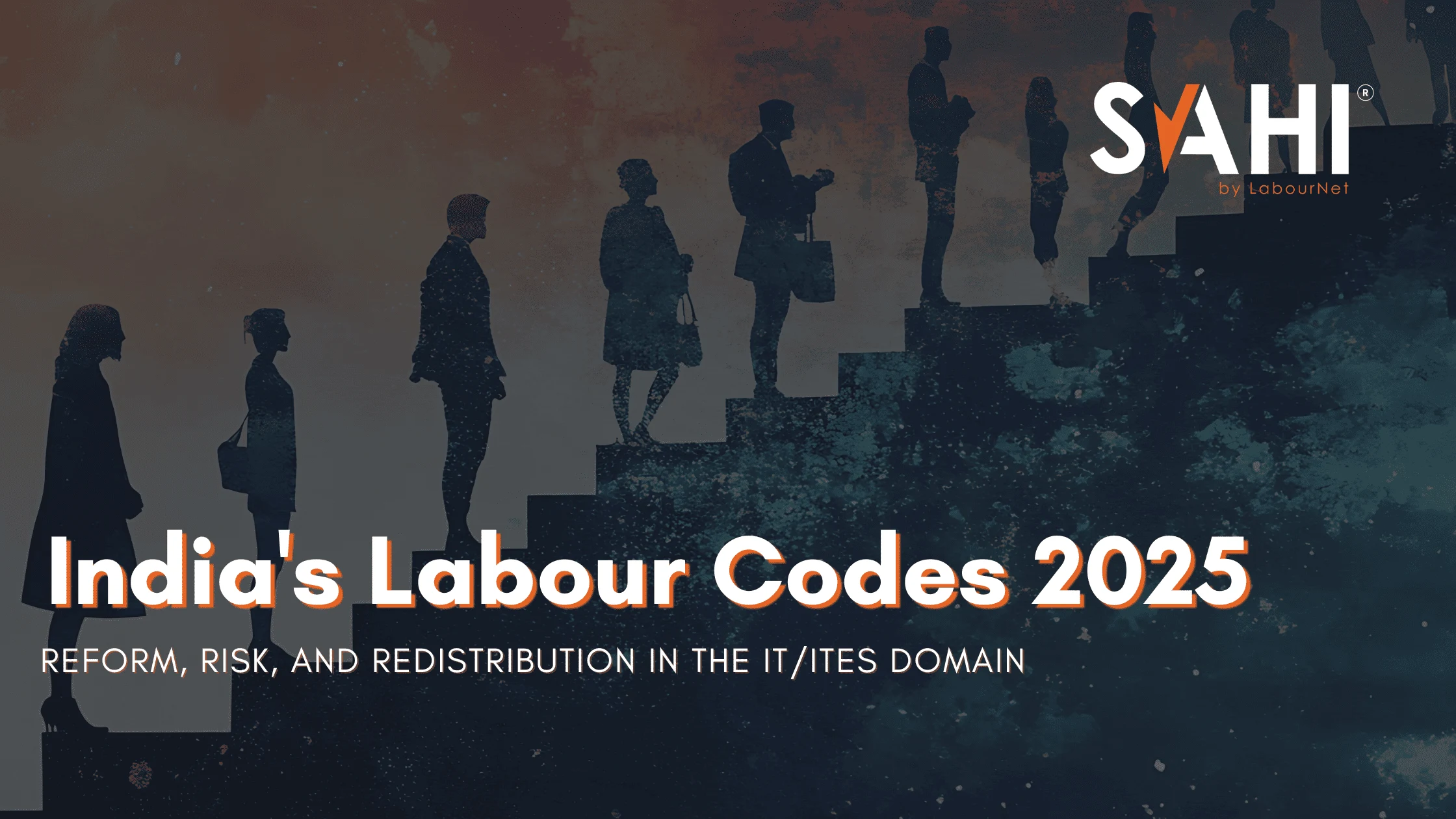Sherry Thomas
Product Head- SAHI Digital
Product Head- SAHI Digital
India’s digital economy is on fire. Tech roles across AI, Cloud, DevOps, and
Cybersecurity are growing at an unprecedented pace. Yet, the very companies
leading this boom are struggling to hire. According to the 2025 ManpowerGroup Talent Shortage Report, a staggering 80% of Indian employers say they’re facing difficulties in
finding the right talent—higher than the global average. Only 32% of engineering leaders
report that it’s “easy” to hire top-tier software talent—down from 41% the
previous year. Is this a signal of broken hiring ecosystems?
So what’s driving this crunch? A shrinking talent pool? Outdated education systems? Or are companies simply unprepared for the realities of a fast-evolving tech landscape?
Let’s break it down.
New-age roles—think GenAI engineers, platform architects, DevSecOps specialists—have created more demand than the market can handle. Take GenAI as an example. As per a 2025 report from The Economic Times, India currently has only one qualified GenAI engineer for every 10 open positions. While thousands graduate with IT degrees each year, their job-readiness—especially in cutting-edge domains—remains limited. Making matters worse, India’s top IT recruiters have cut fresh graduate intake by over 50% this year. The reason? Skills irrelevance, high onboarding time, and low ROI from mass hiring strategies.
The old hiring model—hire when needed, train on the job—is broken. Most companies don’t have role-linked skilling frameworks or predictive hiring strategies in place. The World Economic Forum’s Future of Jobs Report 2025 reveals that only 19% of Indian firms have a defined skills taxonomy. That means most companies aren’t benchmarking, forecasting, or building internal pipelines based on real business needs.
This lack of structure leads to two outcomes:
Even when companies do find the right talent, they often lose them just as fast. The average attrition rate in India’s IT/ITES sector is around 25%, driven by high demand, low engagement, and lack of clear growth paths. Many employees exit within 12–18 months—often because roles don’t match expectations or career progression is unclear.
So, companies aren’t just facing a hiring crunch. They’re trapped in a costly loop of hire-train-replace.
A joint study by EY & iMocha highlights the urgency of this challenge:
The result? Candidates may look good on paper but fall short when deployed.
The numbers tell us it’s both. But only one side is within your control. You can’t speed up how quickly universities adapt. You can’t magic up experienced developers overnight. But what you can control is how you:
Forward-looking companies are already shifting from “staffing” to “strategic workforce solutions.” Here’s how:
Companies are now partnering with platforms to train candidates before hire, not after. These work-integrated models ensure candidates are project-ready on Day 1—saving weeks in onboarding and millions in L&D costs.
Hiring isn’t the only way forward. Companies are investing in internal career mobility programs—upskilling existing employees to fill emerging roles. This not only builds loyalty but also reduces attrition.
Instead of taking on the risk of hiring and training themselves, companies are collaborating with partners who deliver role-ready candidates with skills tested in real-world environments. It’s faster, smarter, and more scalable.
In 2025, the real competitive advantage isn’t just about hiring more—it’s about being ready faster.
The IT talent crunch is not just about how many people are out there. It’s about how companies think, plan, and prepare for what’s next.
So, ask yourself: Is your hiring strategy built for speed—or for sustainability?
Because in today’s tech economy, readiness is currency—and strategy is everything.
So what’s driving this crunch? A shrinking talent pool? Outdated education systems? Or are companies simply unprepared for the realities of a fast-evolving tech landscape?
Let’s break it down.
What’s Driving the Talent Crunch
1. Tech Is Outpacing Traditional Talent Pipelines
New-age roles—think GenAI engineers, platform architects, DevSecOps specialists—have created more demand than the market can handle. Take GenAI as an example. As per a 2025 report from The Economic Times, India currently has only one qualified GenAI engineer for every 10 open positions. While thousands graduate with IT degrees each year, their job-readiness—especially in cutting-edge domains—remains limited. Making matters worse, India’s top IT recruiters have cut fresh graduate intake by over 50% this year. The reason? Skills irrelevance, high onboarding time, and low ROI from mass hiring strategies.
2. Reactive Hiring Models Haven’t Evolved
The old hiring model—hire when needed, train on the job—is broken. Most companies don’t have role-linked skilling frameworks or predictive hiring strategies in place. The World Economic Forum’s Future of Jobs Report 2025 reveals that only 19% of Indian firms have a defined skills taxonomy. That means most companies aren’t benchmarking, forecasting, or building internal pipelines based on real business needs.
This lack of structure leads to two outcomes:
- A dependency on last-minute hiring, increasing cost and time-to-productivity.
- A growing disconnect between what companies need and what candidates bring.
3. Attrition and Burnout Are Amplifying the Gap
Even when companies do find the right talent, they often lose them just as fast. The average attrition rate in India’s IT/ITES sector is around 25%, driven by high demand, low engagement, and lack of clear growth paths. Many employees exit within 12–18 months—often because roles don’t match expectations or career progression is unclear.
So, companies aren’t just facing a hiring crunch. They’re trapped in a costly loop of hire-train-replace.
Skills Gaps vs. Skilling Strategy
A joint study by EY & iMocha highlights the urgency of this challenge:
- 81% of Indian companies struggle with gaps in developer-level tech skills.
- Nearly 1 in 3 companies expect a third of their workforce to require upskilling or reskilling by the end of the year.
The result? Candidates may look good on paper but fall short when deployed.
Supply vs. Strategy: What’s Really Broken?
The numbers tell us it’s both. But only one side is within your control. You can’t speed up how quickly universities adapt. You can’t magic up experienced developers overnight. But what you can control is how you:
- Forecast talent needs proactively
- Align skilling with specific job roles and business outcomes
- Evaluate readiness, not just resumes
- Build a deployable, agile talent pipeline
The Emerging Solution: Integrated Talent Strategy
Forward-looking companies are already shifting from “staffing” to “strategic workforce solutions.” Here’s how:
Deploy-Ready Talent Pipelines :
Companies are now partnering with platforms to train candidates before hire, not after. These work-integrated models ensure candidates are project-ready on Day 1—saving weeks in onboarding and millions in L&D costs.
Career Mobility & Retention
Hiring isn’t the only way forward. Companies are investing in internal career mobility programs—upskilling existing employees to fill emerging roles. This not only builds loyalty but also reduces attrition.
Outcome-Linked Workforce Partnerships
Instead of taking on the risk of hiring and training themselves, companies are collaborating with partners who deliver role-ready candidates with skills tested in real-world environments. It’s faster, smarter, and more scalable.
Readiness Is Currency
In 2025, the real competitive advantage isn’t just about hiring more—it’s about being ready faster.
The IT talent crunch is not just about how many people are out there. It’s about how companies think, plan, and prepare for what’s next.
So, ask yourself: Is your hiring strategy built for speed—or for sustainability?
Because in today’s tech economy, readiness is currency—and strategy is everything.



